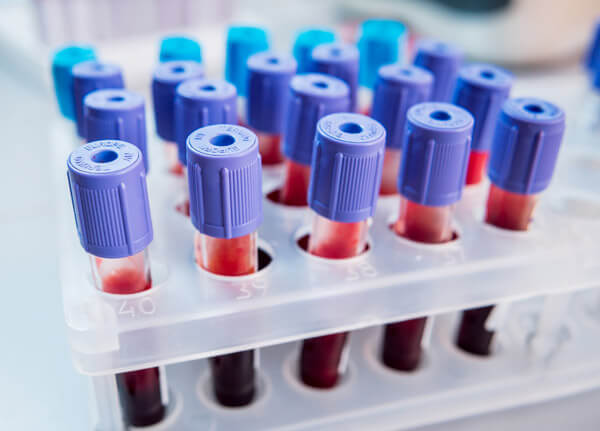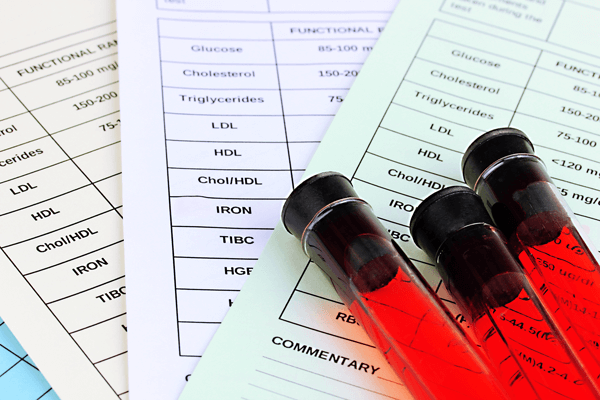Normal results on a blood test when you don’t feel fine?

Have you ever decanted what looks like half your blood, for thorough blood tests, hoping they’ll give you some answers to what’s causing your symptoms, only to be told everything has normal levels? This is something I hear so often as I see more and more clients with what I call functional rather than pathological issues. What that means is that people can have symptoms that affect them even though they’re not showing up on your usual types of testing. That often means that whatever is going on hasn’t affected the body’s tissues in any measurable way… yet.
Luckily, there are different ways of reading blood tests. I’m now going to talk about a potential way that might be able to get you more information out of your blood tests than what you would usually get through the doctor.
Here is a quick point-form run down of what I’ll be talking about, for those wanting the reader’s digest version:
- The normal ranges of blood tests don’t always show when something isn’t quite right, and the issue is often far advanced by the time it gets picked up
- There is another way of looking at blood tests, using the optimal result ranges which are narrower and can pick up potential problems when the doctor says your bloods are fine. The optimal levels are what natural therapists often use and they are more indicative of health or disease
- Most doctors won’t do extra testing during a blood test booking – they’ll stick to the basics which means it might not be testing enough details to show what’s wrong. This is another reason why your doctor may keep telling you everything is normal even though you know it’s not
- If you want to know more information and get more thorough testing you might need to pay out of pocket. You can get some back on Medicare in Australia but it’s likely you won’t be completely covered
- Here is a website where you can order testing without referrals from a doctor
- There are some natural therapists who specialise in reading blood results and pathology. If you are wanting to know more about your blood results make sure you find someone who has done some training or is experienced in this area to get the best information you can
- Some practitioners even have special software for helping them interpret blood results and talking about what would show up in a blood test. This can be really useful when looking at the whole picture of what might be going on under the surface
Onto the more technical side of things if you’re looking for more information, here’s an expansion of the above.
The normal or average ranges
What usually gets referred to when you use conventional testing methods is something called the average or normal ranges. These ranges are brought into being after collating the results of literally thousands and thousands of tests for the same thing in a given population (like the whole of Australia).
Let’s take the MCV for example. When you see MCV on your blood test, it represents something called Mean Corpuscular Volume. This is a measure of the average size of your red blood cells. If MCV is high it can mean that you’re deficient in B12 and/or folate, because B12 and folate are needed for DNA replication in all cells. If those two nutrients are deficient, then the cells don’t grow in quite the right way and are misshapen and too large. If the MCV is low, then it can mean you’re deficient in iron, which then causes the cell to be too small because there’s basically not enough haemoglobin to bulk it out. The average range for the MCV can vary from lab to lab, but 80-100 fL is what’s considered a normal range.
What is the problem with normal?
We all know that normal is a box that science likes to drape statistical values around in all kinds of ways, but normal doesn’t always mean great. I mean, we can say that a pretty normal western diet consists of a lot of junk food. Does that mean it’s a good thing? And what might it then say about the results of that diet when measured in the blood test results of the normal population?
So, while we might have blood test readings in the normal range (which means that it’s pretty clear that we’re not in danger of our lives), it doesn’t necessarily mean it’s all completely fine.
Optimal level
This is where something called the optimal range comes into play. We can actually find out so much more about what might not be quite right if we can read blood tests using the optimal ranges. These aren’t as easy or obvious to find. Some can be looked up online, and there are courses out there where practitioners can find out how to apply optimal ranges to bloods and to make various interpretations based around those ranges.
The optimal ranges are usually narrower and more defined than the normal ranges. They’re tailored, through a lot of research, to represent what levels are best for a healthy human being. This means that results that aren’t optimal but within normal ranges can be identified and flagged for potential issues before they become severe enough to be considered outside the normal range.
If we go back to the MCV reading, the optimal range is around 80-90 fL. That’s quite a difference (remember the normal range is 80-100 fL). This difference can be super significant when we are trying to work out how healthy our red blood cells are and how deficient we might be in B12 and/or folate. But to be certain which one is low we’d need to also measure optimal ranges of both of those vitamins.
So, let’s look at serum vitamin B12, needed for healthy nervous system function and cell division, among many other functions. The normal range is considered to be around 160-800 pmol/L. The optimal range starts at 600pmol/L and the top level is around 1100 pmol/L! (Source: Ross Walter).
So why are the normal and optimal ranges so different?
We’ve already touched a little on why these ranges differ so widely, but to go into a little more detail, we aren’t exactly the most healthy society in the universe these days. Maybe we never were, but when I’m in clinic I see so many people who are really struggling to eat the right foods and to get the right nutrients in their diet. And even if those people might be eating perfectly, they are often having issues with absorbing or holding on to those nutrients.
One of the most common of these underlying issues I come across is low stomach acid. You might think you have high stomach acid if you get a bit of reflux which causes symptoms of burning, and often you’ll get prescribed antacids for relief. But if you think about it, low stomach acid will lead to fermentation of food in the stomach. So, even a highly nutritious meal will end up sitting there not being broken down, which then causes gas to be produced. Then the gas goes “glurp” and forces itself up through your lower oesophageal sphincter (which sits at the top of your stomach and should always prevent anything from coming out the wrong direction). This causes stomach contents to be pushed up into the delicate membranes of the oesophagus which are not suited to anything remotely acidic. No matter how low your stomach acid is, there is always some in there.
The proteins and fats and complex carbs don’t get broken down properly if there’s low stomach acid. Then, all the enzymes further down the track don’t get the opportunity to work on the food fragments as they’re still too big. Which means, you’re likely to be absorbing most of the easy to digest simple carbs, a small fraction of the proteins and fats, and maybe the basics of the minerals and vitamins… meaning that your body may go into starvation-carb-craving-mode because it’s missing out on the good stuff. The maldigestion goes on to affect everything downstream, from your gut bacteria to your digestive secretions, the health of your gut lining and even your mood.
This nutrient deficiency then has the knock-on effect of causing problems with the way the incredible biochemical machinery of your body is functioning. In a nutshell, if a nutritional deficiency is severe enough, it will start to cause all kinds of symptoms as things just don’t work as well. Think of oil in a car and what happens if there’s not enough. Of course, it’s not that simple, considering we aren’t cars. And we have emotions and thoughts and stress and busy lives and all kinds of other factors influencing our health and functioning. But hopefully that gives you a bit of a picture of what might be going on when we talk about the importance of nutrient deficiencies.
So I’ve gone on and on about digestion rather than the difference between normal and optimal ranges, but you can see that if your stomach acid isn’t optimal, and you’re also eating regular junk food, it’s pretty likely you won’t have blood results in the optimal ranges… and then it’s likely you may not be feeling so glowy and fabulous all the time, even if you’re still seeing results in the normal ranges.
And we haven’t even begun to talk about the soils in Australia and how deficient they are in so many vital minerals, no matter how well we might be eating. Maybe more on that another time.
Why bringing your bloods to someone trained to read blood results in the optimal ranges might be a good idea
Many people persist with the same symptoms for years before anything measurable shows up on a blood test. By then it might be far advanced. I have heard clients mention that their doctor can’t do anything about their chronic issue until the results show that they’ve hit a particular threshold, and then they can give medication to control the symptoms. It’s almost like the condition isn’t supposed to exist until the blood test results say it does, even though symptoms might be debilitating for a long time before things get to that threshold.
In naturopathic, nutritional and homeopathic thinking, it’s more about getting in there and doing something about the underlying issues causing the problem than waiting until it gets measurable. Whether you have symptoms and your blood tests are telling you there’s nothing wrong, or you just have a feeling something isn’t quite right, it’s highly likely there is something that can be done before it progresses further. This is where natural therapies can be supportive before the conventional system might pick up potential problems.
And if you add in special blood pathology software, that can make the reading of your results even clearer. Then it can be even more useful to potentially pick up on issues before they completely manifest.
Just a note, though, to say that while this method can be super useful in ferreting out potential issues, in the natural therapies world we don’t use diagnoses in the same way that the medical world does. A natural therapies practitioner should never tell a person they have a particular condition without sending them first to a medical practitioner for confirmation.
What we do is work with people who are committed to addressing the whole person and their underlying causes of disease, no matter what their condition or how advanced it is. This means that we look not only at their blood test optimal results, for example mcv (even if it’s classed as a “normal” blood result), diet and lifestyle, but also their emotional/mental functioning since that is also such a big influence of a person’s overall health.
- The importance of Muscle Mass in menopause - 12/03/2025
- Penny’s gluten free bread recipe - 14/10/2024
- Children and bedwetting: What can parents do to help? - 01/10/2024



